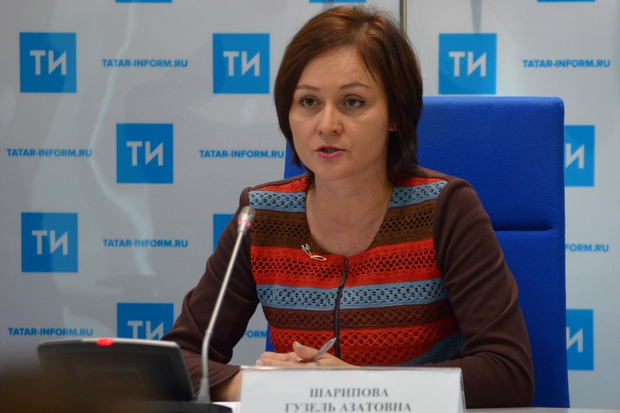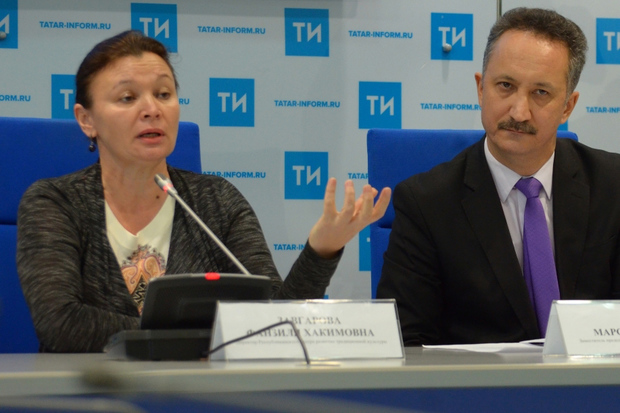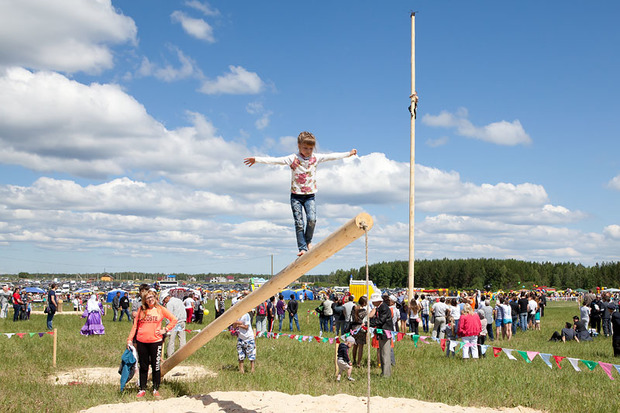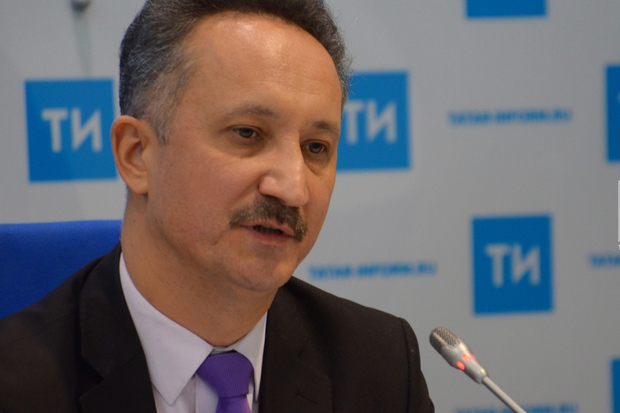‘We will welcome the return of trick riding and picking up bags while riding a horse’
In 2017, the plough’s feast will speak with Astrakhan and Mishar accent
Sabantuy – plough's fest – is gathering more participants walking on the planet. According to preliminary calculations, almost 2 million people have visited the plough's fest this year. Representatives of the Ministry of Culture of Tatarstan and the Worldwide Congress of the Tatarstan told about the main celebration of Tatars that goes back to pre-Islamic times on a conference in Kazan. Speakers reported on the Sabantuys that took place in 2016 and announced the celebrations for the next year. A correspondent of Realnoe Vremya who visited the event with the organisers tells why events sometimes derail, how one of the regions tried to substitute the Tatar tea with alcohol and the role of Bashkirs in the Tatar fest.
Stab at France and Argentina
317 Sabantuys in total have taken place in 2016: 247 festivals in Russian regions and 70 in 25 countries,' told the deputy Minister of Culture of Tatarstan Guzel Sharipova. Many of them were visited by Tatarstan officials – Rustam Minnikhanov, Farid Mukhametshin, Ildar Khalikov, Vasil Shaikhraziev, Rimma Ratnikova. To compare, 227 Sabantuys were held in 2015, 71 of them took place in 28 countries.
The first plough's fest has taken place in the capital of Austria – Vienna. Last year Bulgaria, Hungary and Italy joined the celebration. The event will probably be held in France next year. There was a request from Argentina too. For these 'clear reasons', the festivals did not take place in two Russian cities (Voronezh and Sochi) and two foreign capitals – Stockholm and Helsinki.
'When schedules are made up, these plans derail at times,' the deputy Minister explained. 'Foreign Tatar public organisations work within the law of their countries. These conditions are different. Last year we visited Berlin with a European Sabantuy. The Federal Legislation of Germany is so complicated in terms of organisation that we needed to plan the time and location of the Sabantuy one year beforehand. It is necessary to talk to all services, including police, etc. There are many organisational issues that the Berlin Tatars shouldered. It happens sometimes: they plan first, then postpone it. And there is nothing in the end. But it is an isolated case.'

Guzel Sharipova: 'Foreign Tatar public organisations work within the law of their countries. These conditions are different.' Photo: tatar-inform.ru
40 municipal districts of Tatarstan became responsible for Russian regions where Tatars live.
Professional artists were included in the delegations. Ober 120 artistic collectives equal to 1,000 people entertained the guests of the festivals. They were also accompanied by masters of art and craft who participated in exhibitions on the spot.
Over 1,85 million people participated in Sabantuys. Over 20,000 people visited the 16 th Federal Sabantuy in Nizhny Novgorod and 50,000 people saw the 7th All-Russian Village Sabantuy in Staraya Kulatka village in Ulyanovsk District.
Guzel Sharipova proudly noted that officials of the republic and regions were taking part in the Tatar festival more often. The greatest number of Sabantuys was in Kazakhstan (20), Uzbekistan (7) and Kyrgyzstan (6). For example, the Tatar festival in Tashkent gathered over 40,000 people. What is more, Russian diplomats visited the events abroad.

Celebration on horse but without swim fins and moonshine
The director of the Regional Traditional Culture Development Centre Fanzilya Zavgarova explained the sacral meaning of this event.
'There are regions where Sabantuy is a kind of marker of our Tatar nation,' she emphasised. 'Our main task is to conserve the structural elements of the festival: wrestling, pole climbing, weightlifting, grain-sack fighting. We also try to organise horse races. It is costly. But we know they are held in some regions of the country. We are witnessing a universalisation of Sabantuy.'
She said the mission of Sabantuy was to let the world acquaint with the Tatar nation.
'Sabantuy is held to conserve national traditions, the satisfaction of spiritual needs of Tatars who don't live in Tatarstan. The festival helps to promote the Tatar culture and support folk artists and craftsmen,' Guzel Sharipova replied.
The functionary also explained why they carefully supervised a correct organisation of Sabantuy. For example, one of the regions wanted to organise a running in swim fins. Another one wanted to demonstrate the Tatar tea: they tried to serve alcoholic drinks in pialas.
'Novelties are possible, but within limits,' she stressed. 'We welcome the return of trick riding and picking up bags while riding a horse.'
The journalists also asked whether the Tatar festival would be able to be included in the UNESCO World Heritage List. Sharipova said the Ministry of Culture would love it, but it was not the 'topic of the day'.

Fanzilya Zavgarova: 'Our main task is to conserve the structural elements of the festival: wrestling, pole climbing, weightlifting, grain sack fighting'. Photo: mkso.ru
What about Bashkirs?
After the press conference, the correspondent of our online newspaper reminded the speakers that Sabantuy was not a festival of Tatars but also Bashkirs. Kazakhs and some other Turkic nations of the Northern Caucasus celebrate it.
As the deputy chairman of the Executive Committee of the Worldwide Congress of the Tatars Mars Tukaev told, local offices of the World Qoroltai of the Bashkirs are invited to Sabantuys in other regions where Bashkirs live. Particularly, it often happened when All-Russian Village Sabantuys took place.
He said the Congress of the Tatars participated in the celebration in Bashkortostan. It is planned to organise Sabantuys near the Ik River (Tatarstan, Bashkiria, Orenburg Oblast) next year. Their plough's festivals are due to take place on 22-23 July.
'Our fraternal Bashkir people are always presented in national courtyards,' Guzel Sharipova made her contribution.
With Mishar accent
Mars Tukaev also informed that the 2017 Federal Sabantuy would take place in Astrakhan approximately on 13 May. And the 8 th All-Russian Village Sabantuy will be in Penza Oblast on 15 July. The dates were chosen taking into account Ramadan (from 27 May to 25 June 2017), so that the Tatars who traditionally profess Islam could easily fast.
As Sharipova said, the money for the organisation of the federal and village Sabantuys is expended by regional and federal centres. Moreover, a municipality that hosts the fest and Tatarstan participate in financing. In addition, local benefactors – 'successful Tatars' – also frequently give money.

Regions express their desire to hold the federal event themselves. Their initiatives are already considered in Kazan. The deputy Minister assessed that the costs of a federal Sabantuy total 40 million rubles. A village Sabantuy is cheaper.
'As a rule, federal and village Sabantuy is held in a region where powerful and influential Tatars live. They talk to their authorities themselves and help with the organisation. There always has been a co-financing with Tatars,' she told our correspondent.
Infrastructure of a region will improve due to the festival: clubs, schools are improved, roads are built, electricity is laid, local artistic collectives get new national costumes and musical instruments.
It should be reminded that the 2012 All-Russian Village Sabantuy was planned in Penza Oblast in a famous Mishar village (Editor's Note: Mishars are a subgroup of Volga Tatars), which is a birthplace of many celebrated Muslim clerics of Russia. However, the governor of Penza Oblast Vasily Bochkarev said the region was not able to host the event because of the lack of money and asked to consider it as a site only in 2014.
'Won't the situation repeat?' the correspondent of Realnoe Vremya asked Sharipova.
'In general, the situation in Russia is improving,' she answered. 'And Sabantuy is held in agreement with first persons. Many things linked with elections happen: one head leaves, another one comes. It is life, such options are possible. But they are isolated cases.'